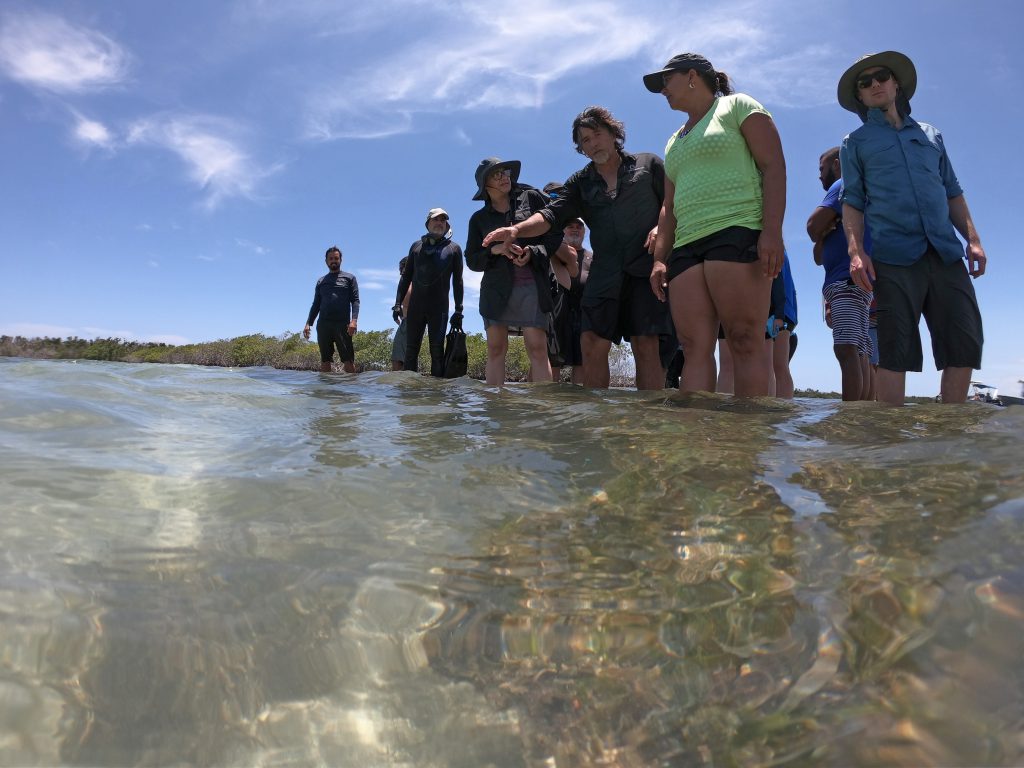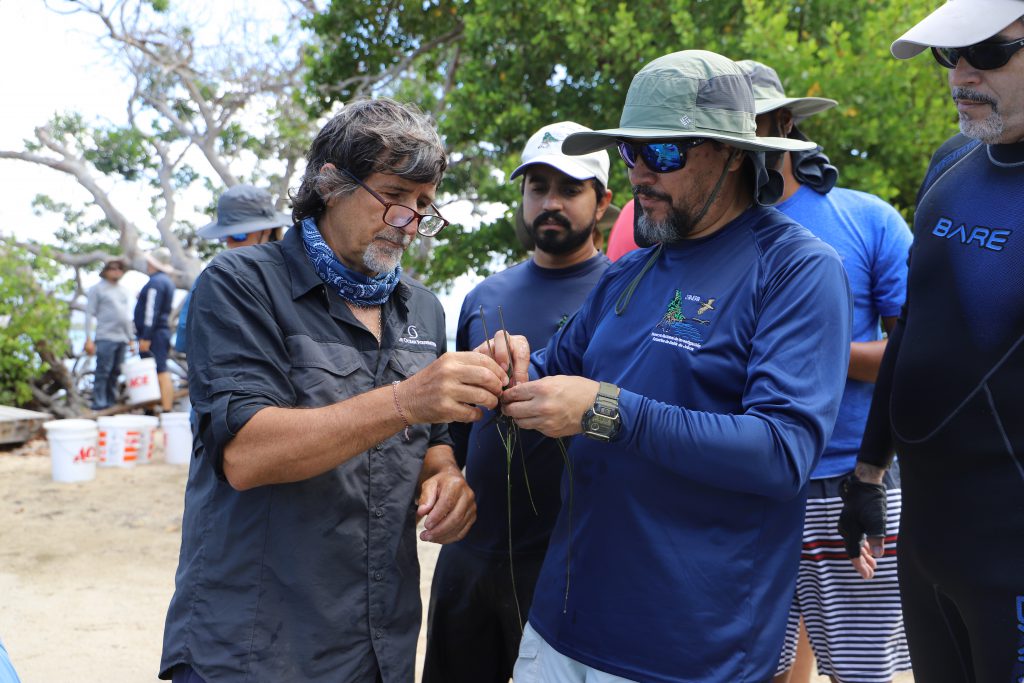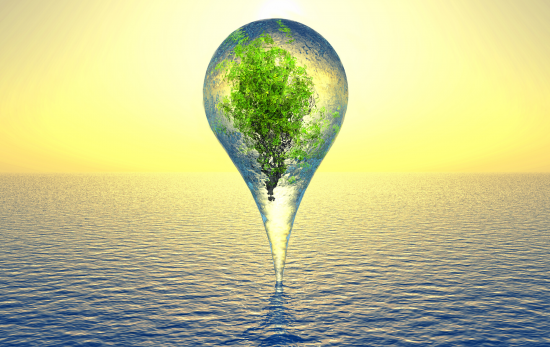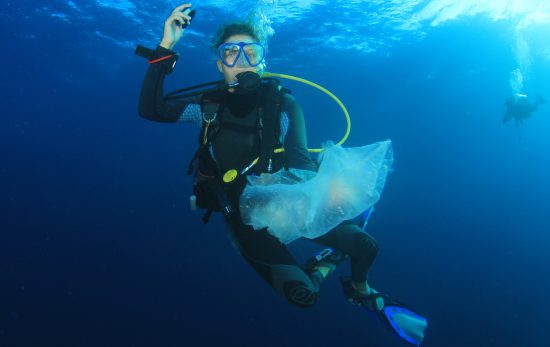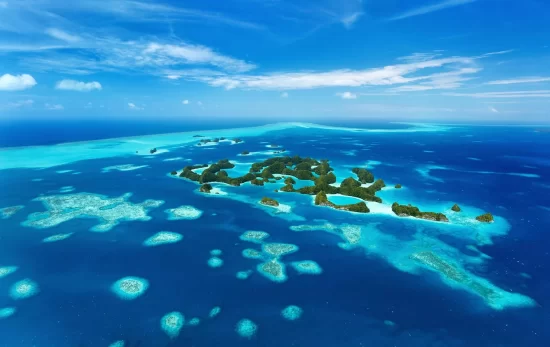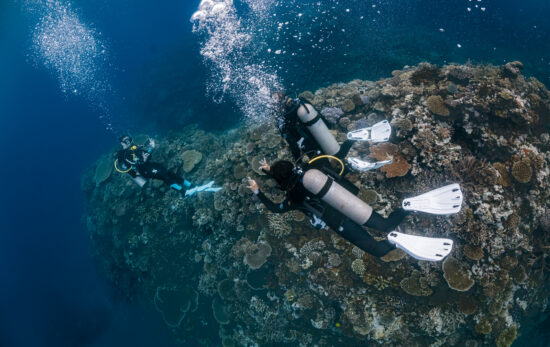1. There are around 50 different species spread all over the globe
Seagrasses evolved roughly 100 million years ago from grass on land, which is why vast marine meadows can be reminiscent of our terrestrial grasslands. Often confused with seaweed (which is a relatively simple algae), seagrasses are organized into four distinct plant families Posidoniaceae, Zosteraceae, Hydrocharitaceae, and Cymodoceaceae.
2. They LOVE the sunshine
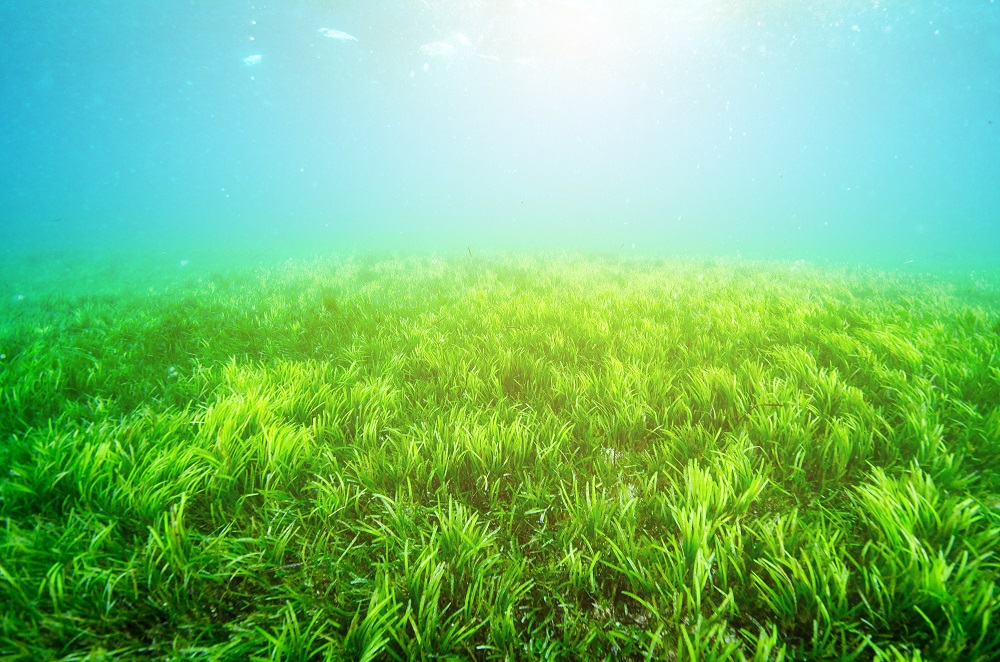
Seagrasses are found all over the world, in every continent except Antarctica. However, they require lots and lots of sunlight to photosynthesise, so the depths at which they occur in the ocean are limited by light availability.
If you currently find yourself near to a bay, lagoon or estuary, we’re willing to bet you’re near some seagrass too.
3. They’re ‘ecosystem engineers’, literally creating the foundations of life
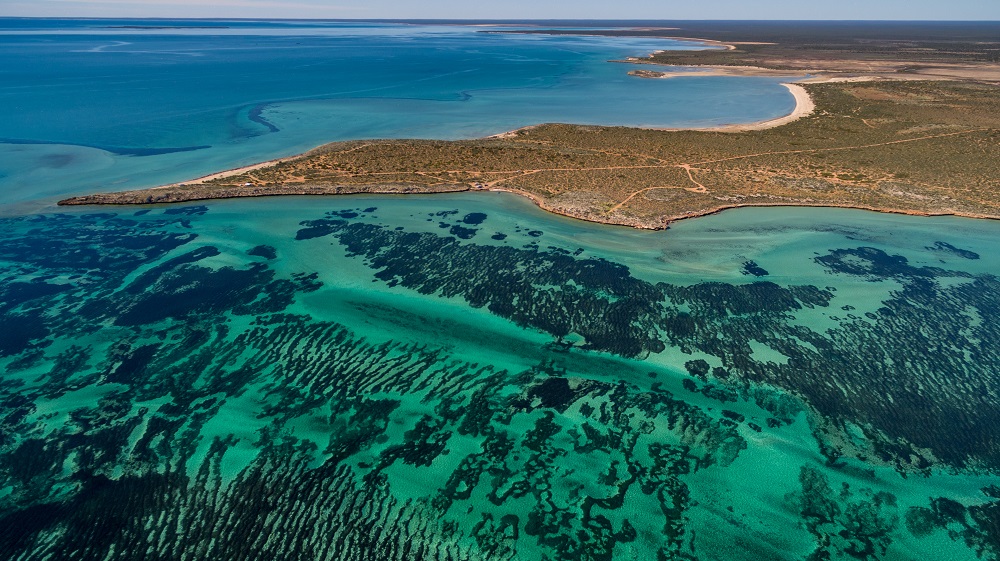
Not only do seagrass meadows pump out a staggering amount of oxygen each day (~100,000 litres per hectare!), they also bring stability to the ocean floor with their extensive root systems.
This means that seagrasses literally alter the ecosystem around them for the better, creating a welcoming habitat for marine creatures great and small.
4. They can absorb carbon up to 35x faster than Amazonian rainforest
Yes, you read that right, 35x more effective! Seagrass meadows account for more than 10% of the ocean’s global carbon storage, whilst only covering around 0.1% of the ocean floor.
That adds up to roughly 27.4 million tons of CO2 annually.
Compare this with the 37.1 billion tonnes of CO2 produced by humanity in 2018 alone, and it soon becomes crystal clear that we need faster and stronger action to address accelerating climate change, like, yesterday.
Seagrass is just one promising method of doing so, and one that is undoubtedly close to divers’ hearts.
5. A single acre alone can support over a million species
Why so close to divers’ hearts? Because of the awe-inspiring, quirky and beautiful marine creatures these habitats represent.
Let’s play a quick game: which of the species below does not rely on seagrass?
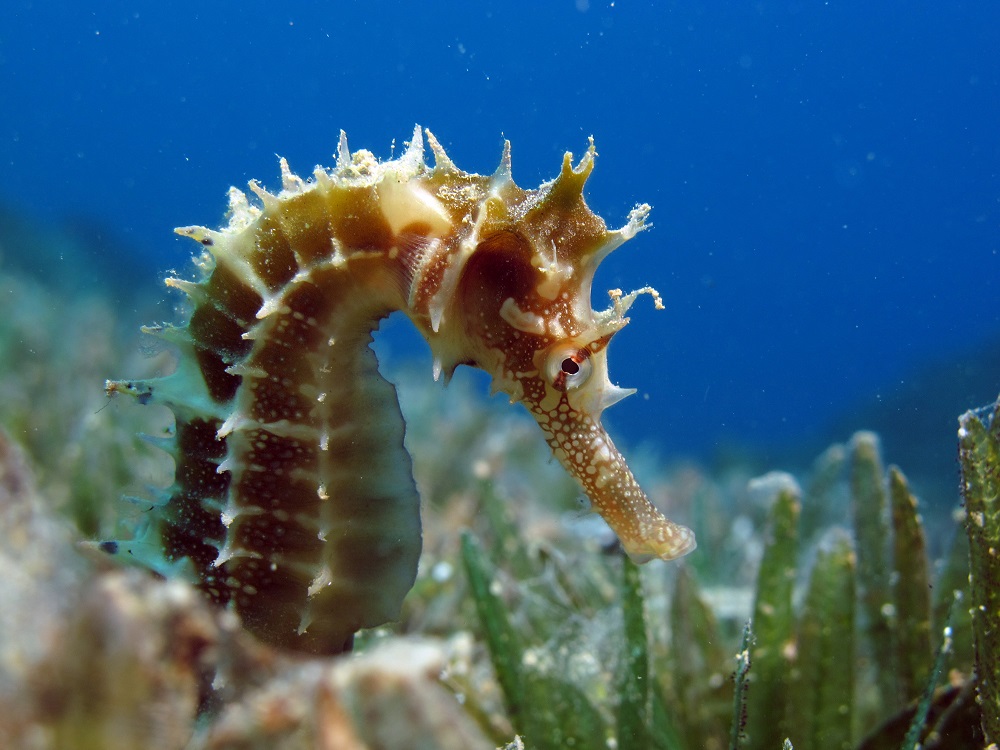
Thorny Seahorse 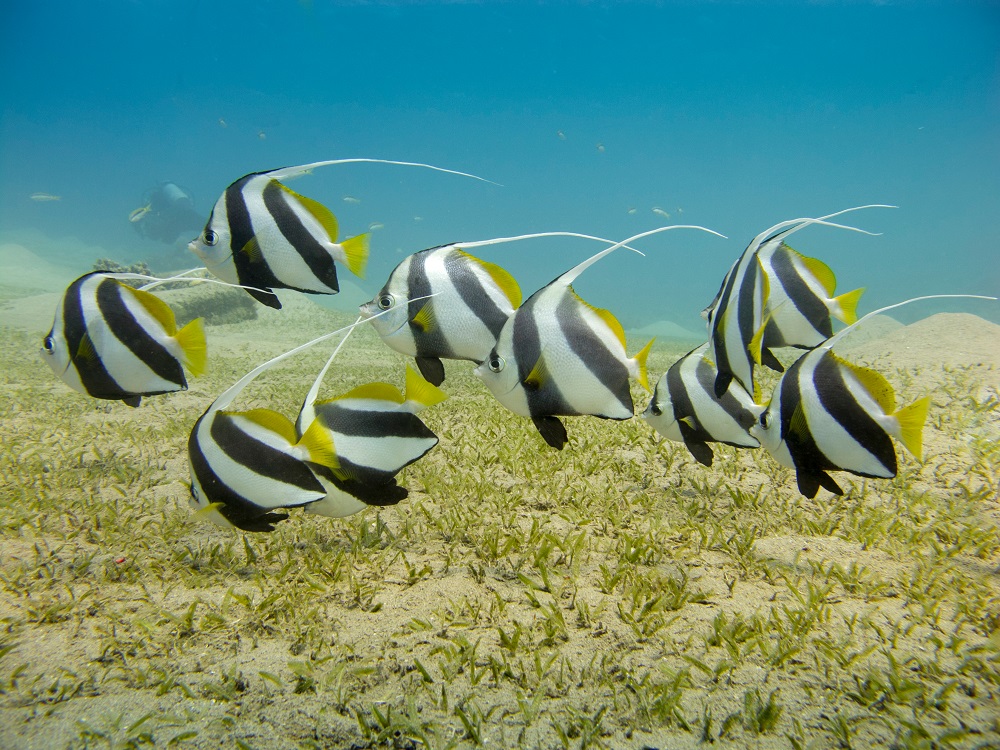
Bannerfish 
Bottlenose Dolphin 
Chocolate Chip Starfish 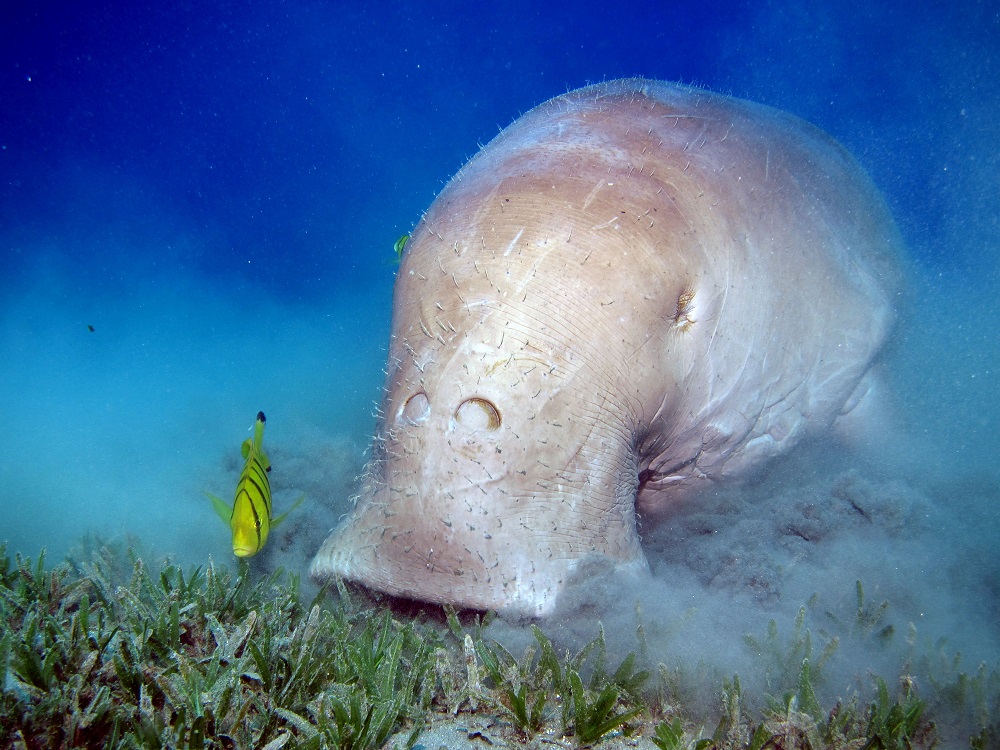
Dugong 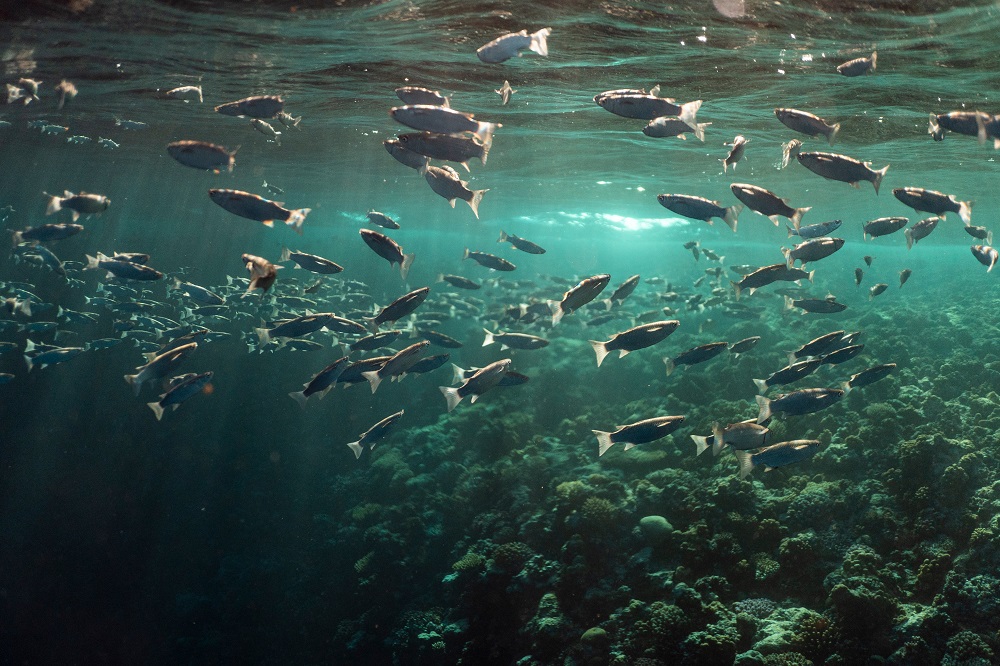
Flathead Grey Mullet 
Green Sea Turtle 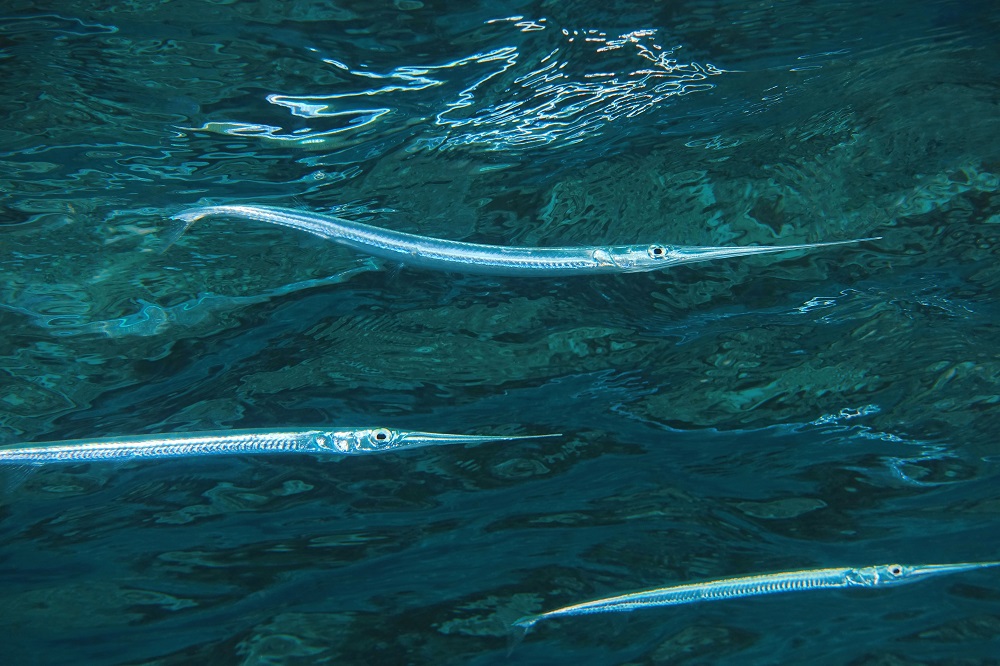
Keeled Needlefish 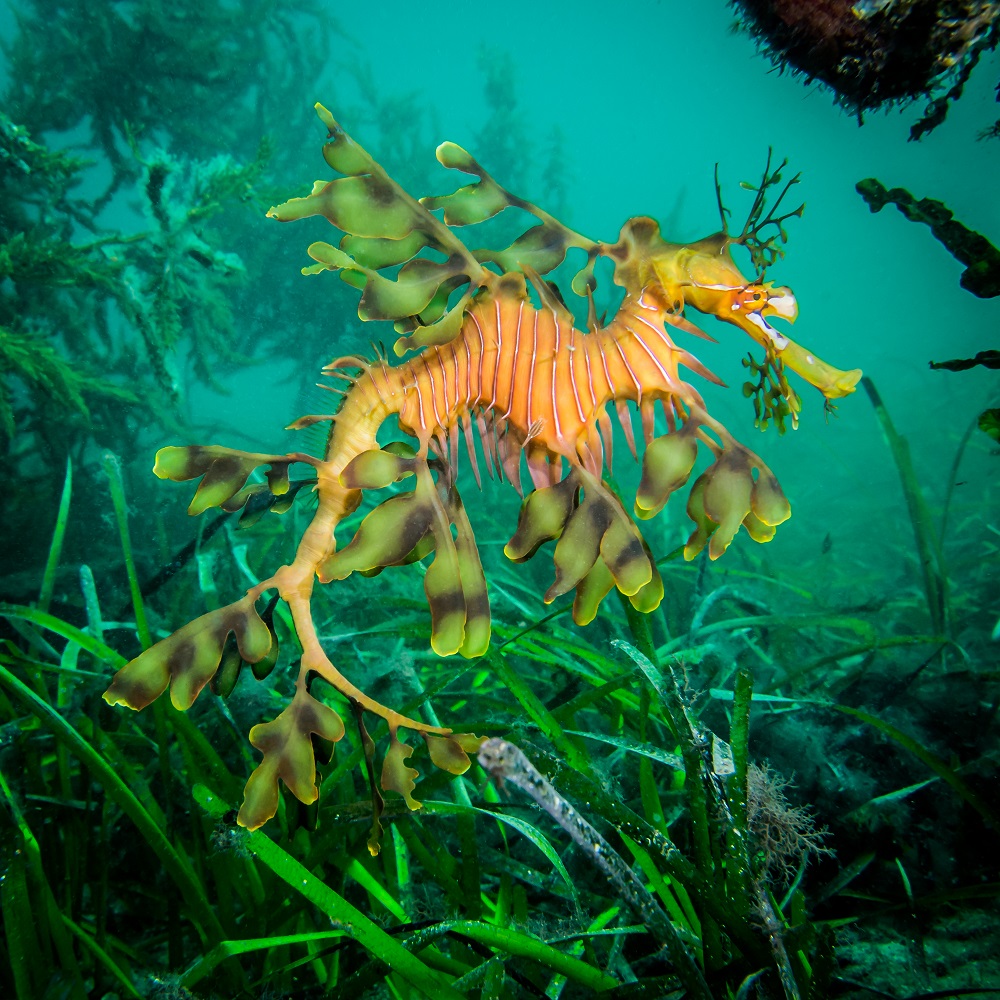
Leafy Sea Dragon 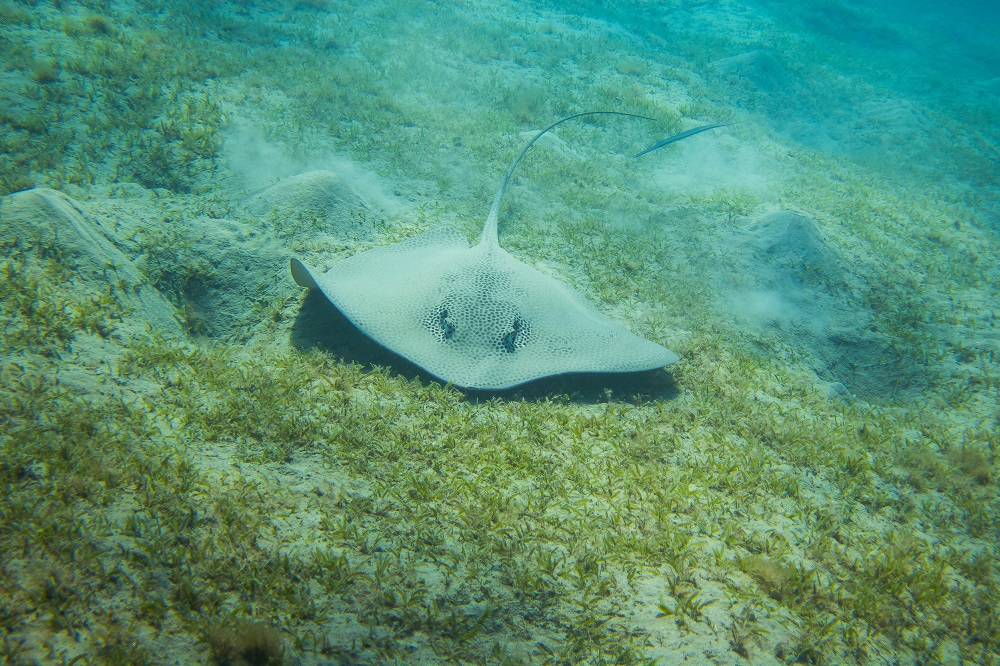
Leopard Whipray 
Ocean Surgeon Fish 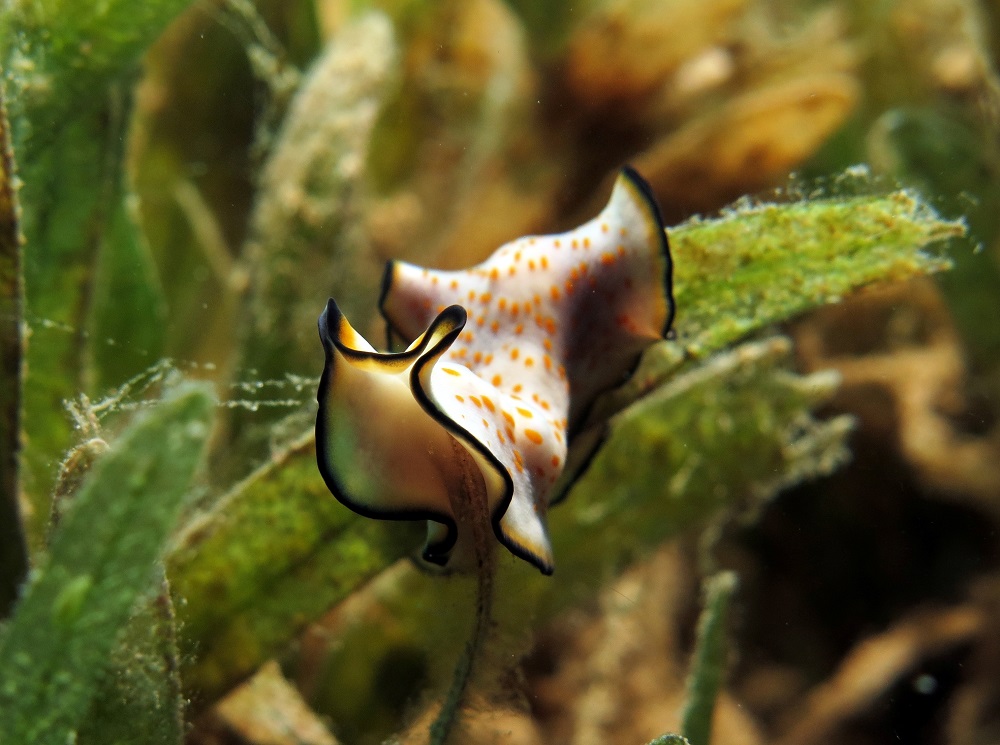
Orange Dotted Flatworm 
Parrotfish 
Reef Box Crab 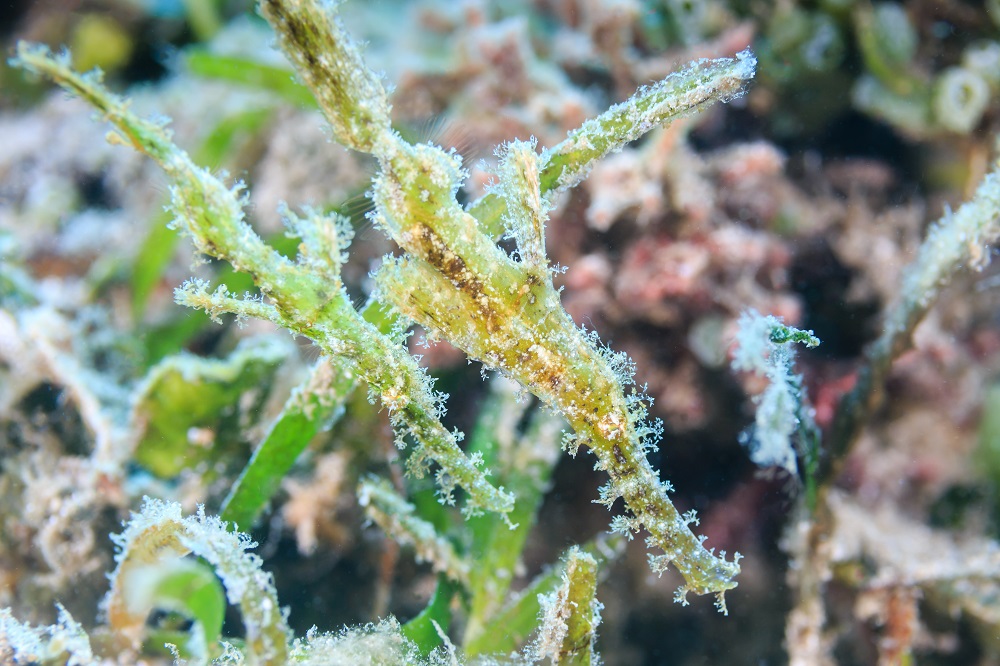
Robust Ghost Pipefish 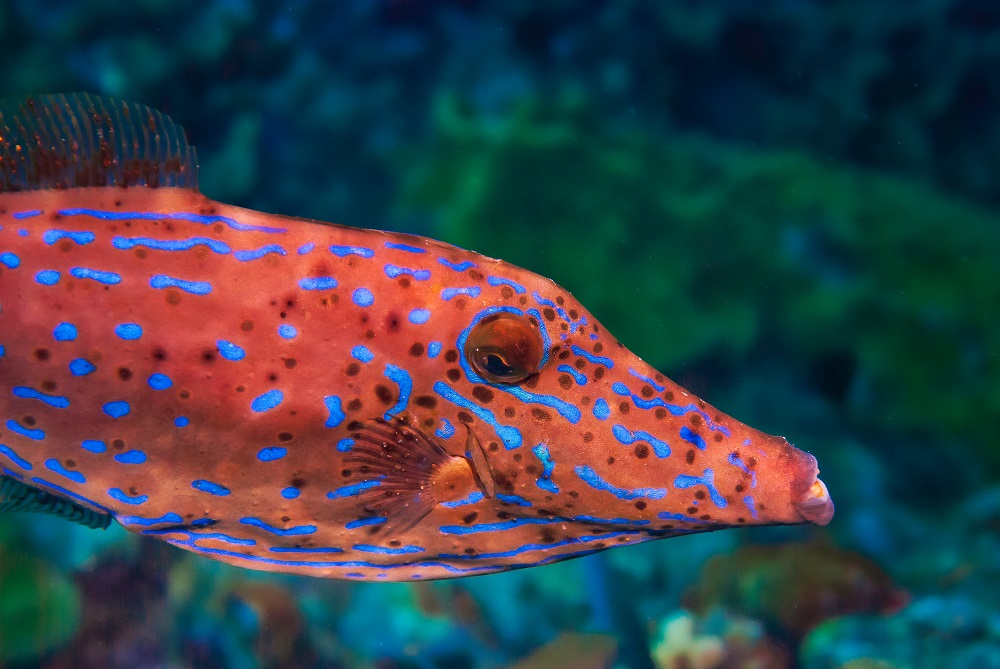
Scrawled Filefish 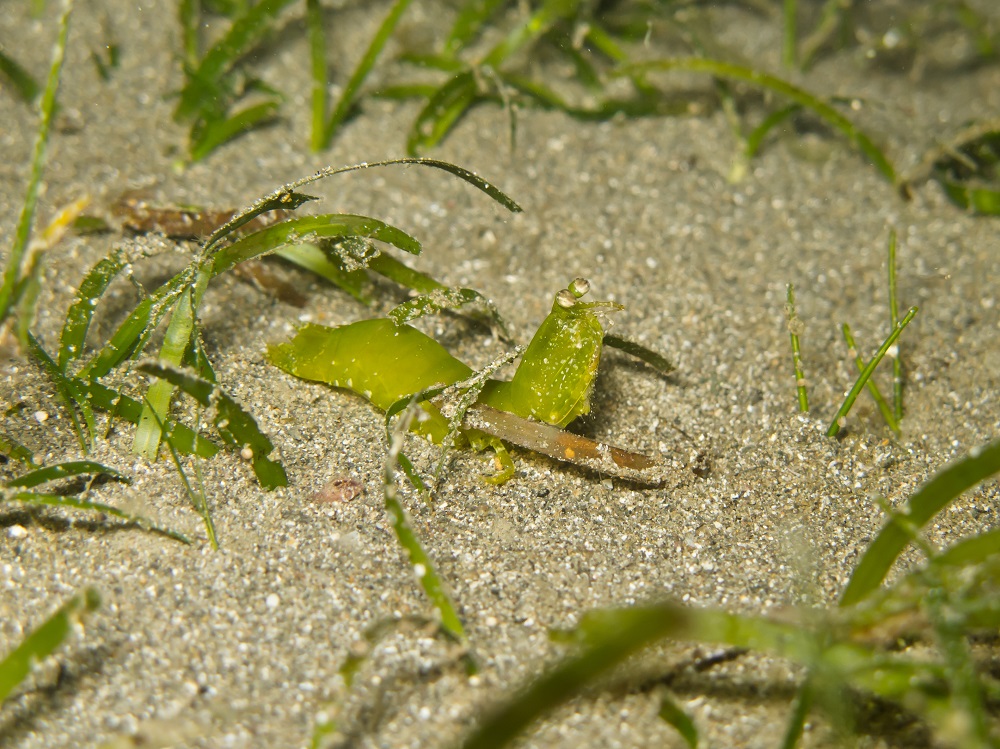
Seagrass Mantis Shrimp 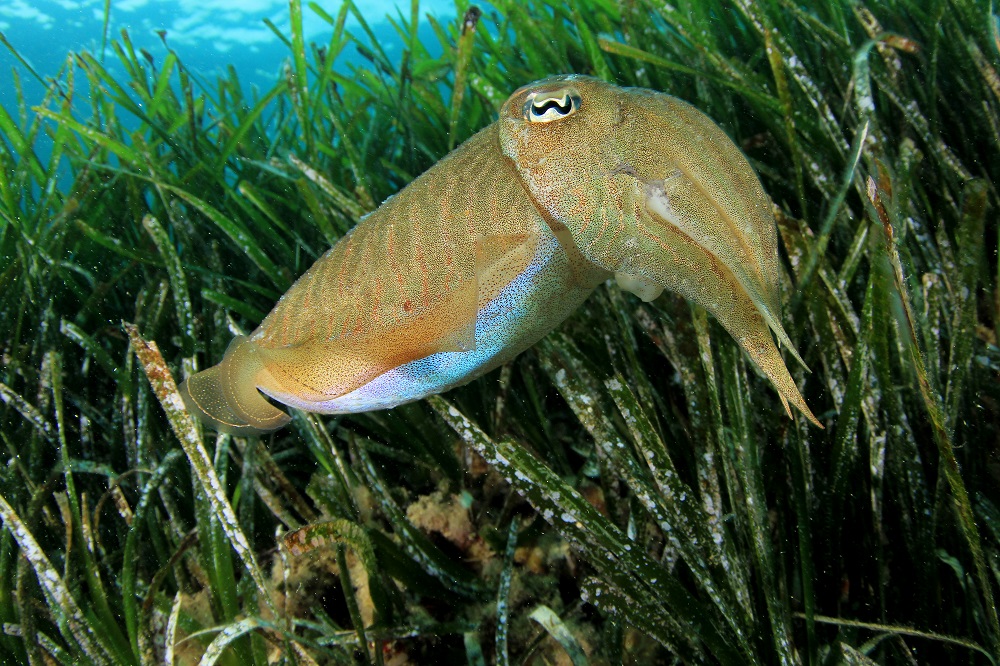
Cuttlefish 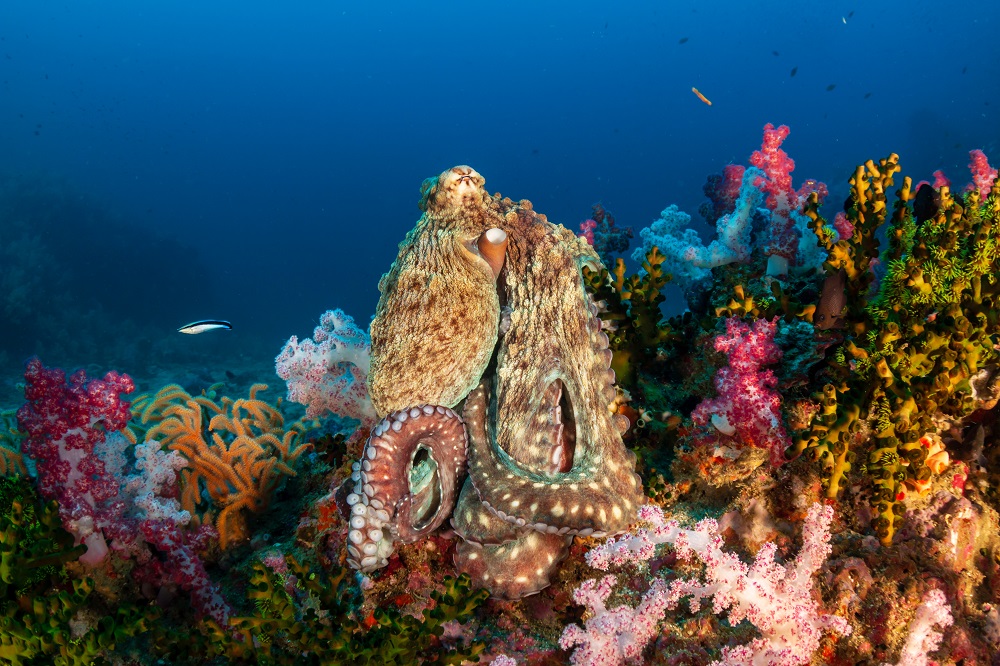
Octopus 
West Indian Manatee 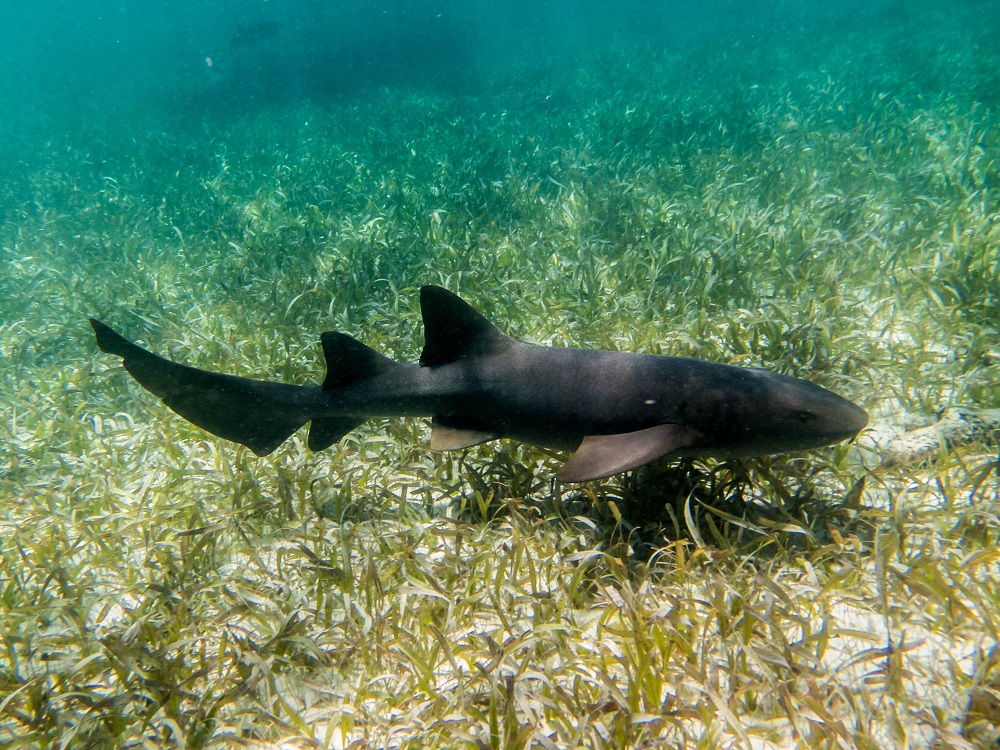
Tawny Nurse Shark
And the answer is…… you guessed it – none of them!
Every single one of these species – and more – rely on the habitats created by seagrass in one way or another.
The sad truth is that when the future of seagrass is uncertain, the future of these beloved marine creatures also comes under threat.
6. You can thank them for that 30m/98ft visibility
As seawater gets trapped in vast seagrasses, sediment and particles suspended in the water column become trapped too. This means cleaner, filtered oceans – the natural way.
When the seabed lacks seagrass, sediments are more frequently stirred up by winds which decreases visibility, and there is nothing to stop land-based industrial discharge or storm water runoff from washing right onto delicate coral reef systems.
7. They provide crucial refuge for numerous species of juvenile reef fish
Seagrass meadows are often referred to as nursery habitats, as their dense gardens trap and slow the flow of seawater, creating shelter for juvenile fish.
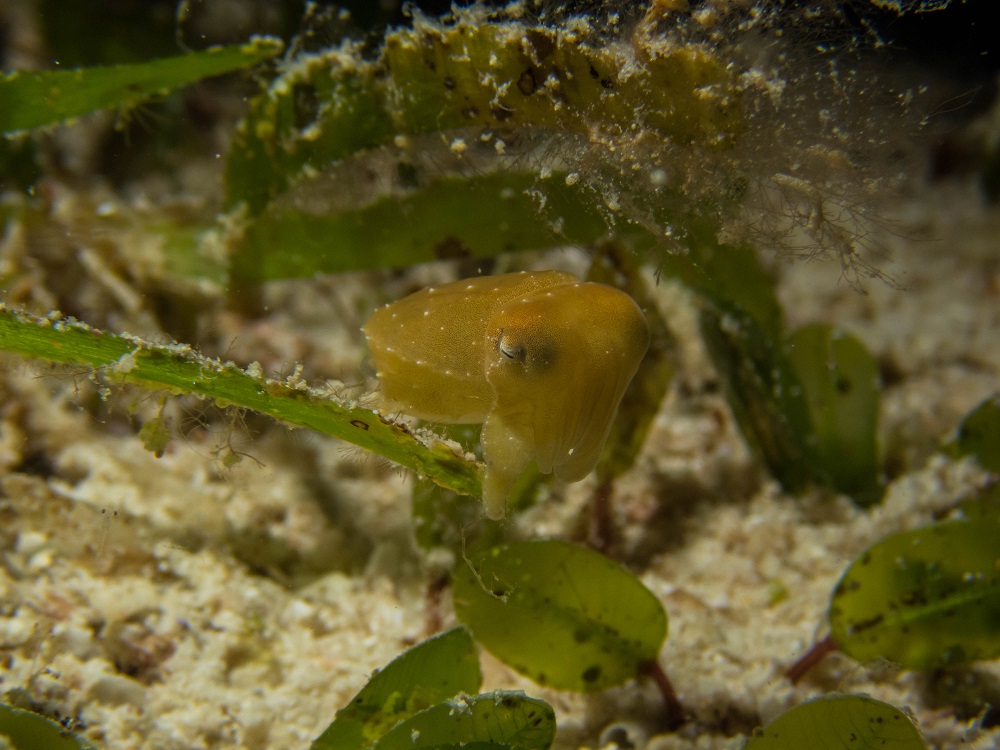
Juvenile Cuttlefish 
Juvenile Threespot Damselfish 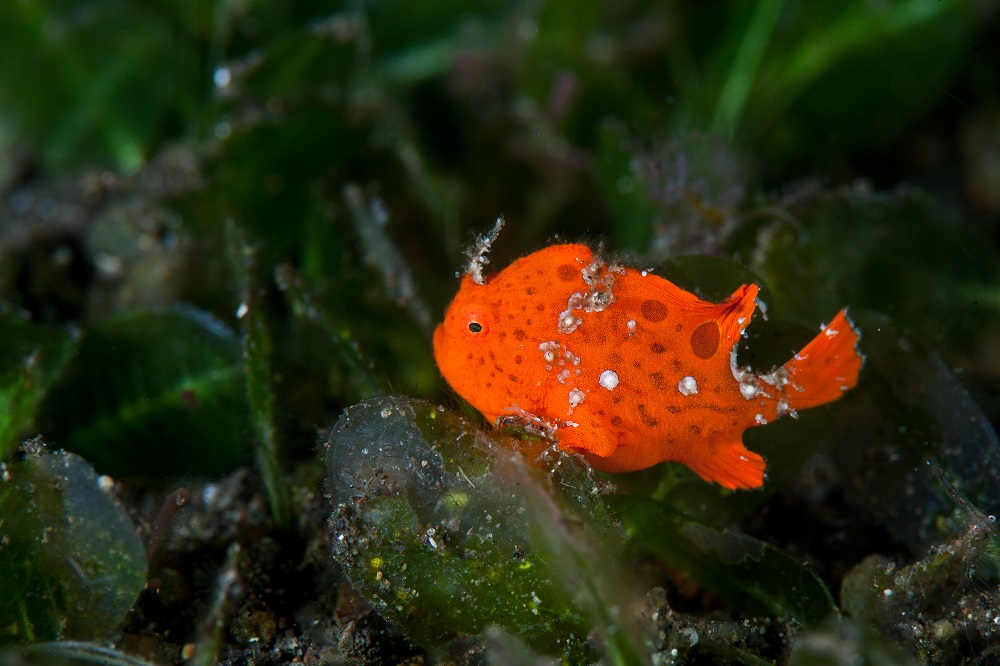
Juvenile Frogfish
Without seagrasses or mangroves to hide out in, these little ones become extremely vulnerable to predators in the open ocean or on the reef.
As with all life on earth, the ability to safely raise the next generation is critical to species survival. When this comes into question, so does the future of all life in the ocean.
8. They’re the true underdog when it comes to coastal community resilience
You’d be forgiven for thinking that the benefits of seagrass are limited to the ocean alone, but you’d be wrong!
The stabilizing effect of seagrass actually reduces flooding from storm surges and hurricanes by dissipating wave energy.
In a time of unpredictable, extreme weather events, this means safer, dryer and more resilient communities. The very same communities where you or your family live, work or spend vacation.
The good news? For every $1 invested in coastal restoration projects and restoration jobs, $15 in net economic benefit is created.
9. They’re under serious threat – disappearing at a rate of two football fields an hour!
Seagrass meadows are disappearing at an alarming rate, and we’ve already lost an estimated 29% globally in the last century. Why?
Natural Threats
- Heavy storms, floods and droughts that make water conditions unfavourable (unfortunately, now being exacerbated by human-induced climate change)
- Disruption by feeding predators as they search for food, including sea turtles and manatees
Human Threats
- Removal by resorts who believe their guests prefer a white sandy seabed than a green meadow
- Irresponsible boating practices including poorly thrown anchors and sailing in too shallow water
- Agricultural and industrial run-off overwhelming the seagrass’s filtration abilities
- Destructive fishing practices such as dredging (scraping the seabed, catching everything, then dumping by-catch overboard)
- Blocking out of light in busy harbours and docks
With three species of seagrass on the endangered list, and a further 14% facing an elevated risk of extinction, now is the time to act.
10. We are the solution
As much as we have unknowingly collaborated across the planet to destroy seagrass habitats, we have the power to work together in protecting them.
As a global network of torchbearers, together we can save the ocean. There is still hope and there is still time.

